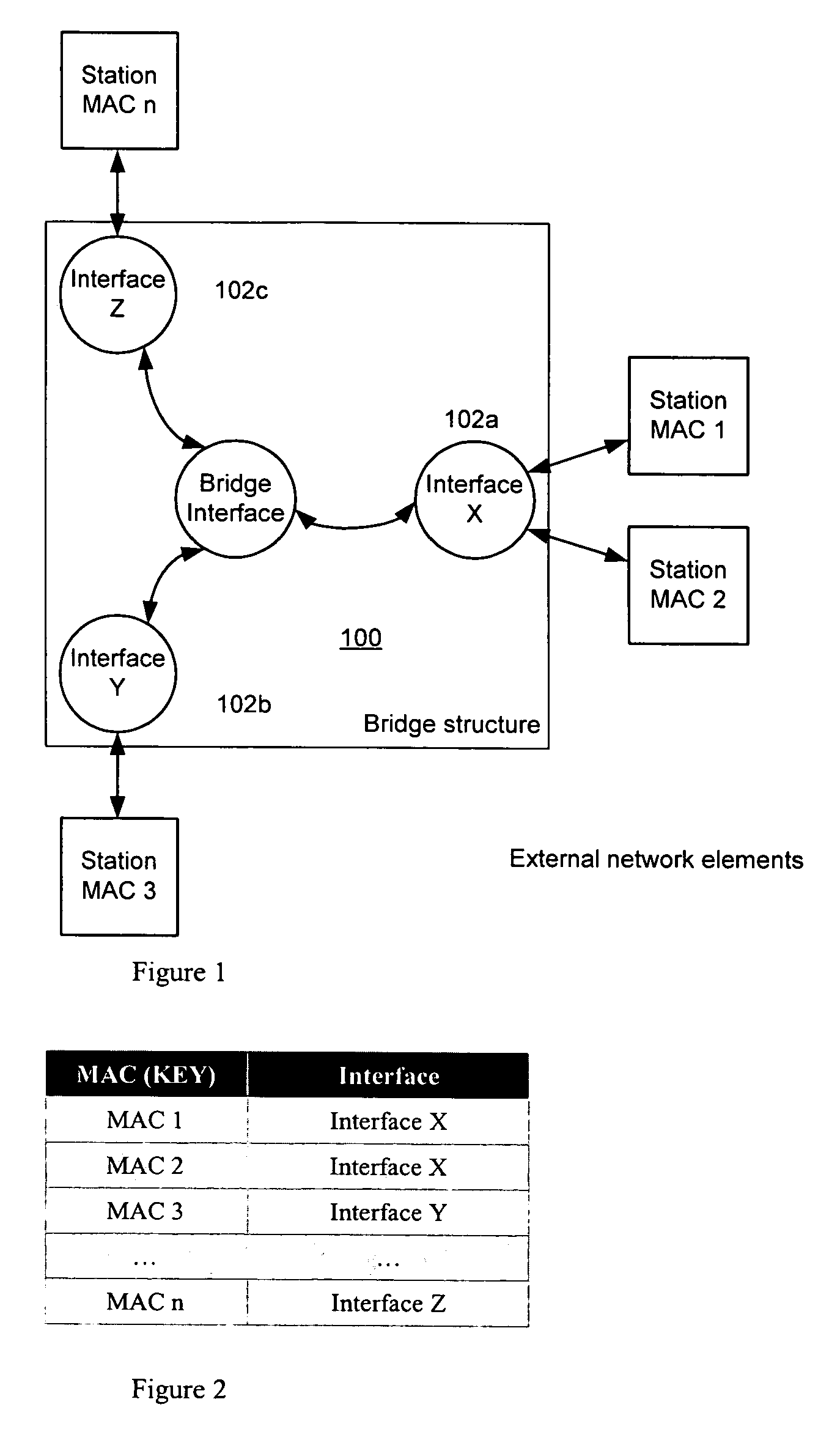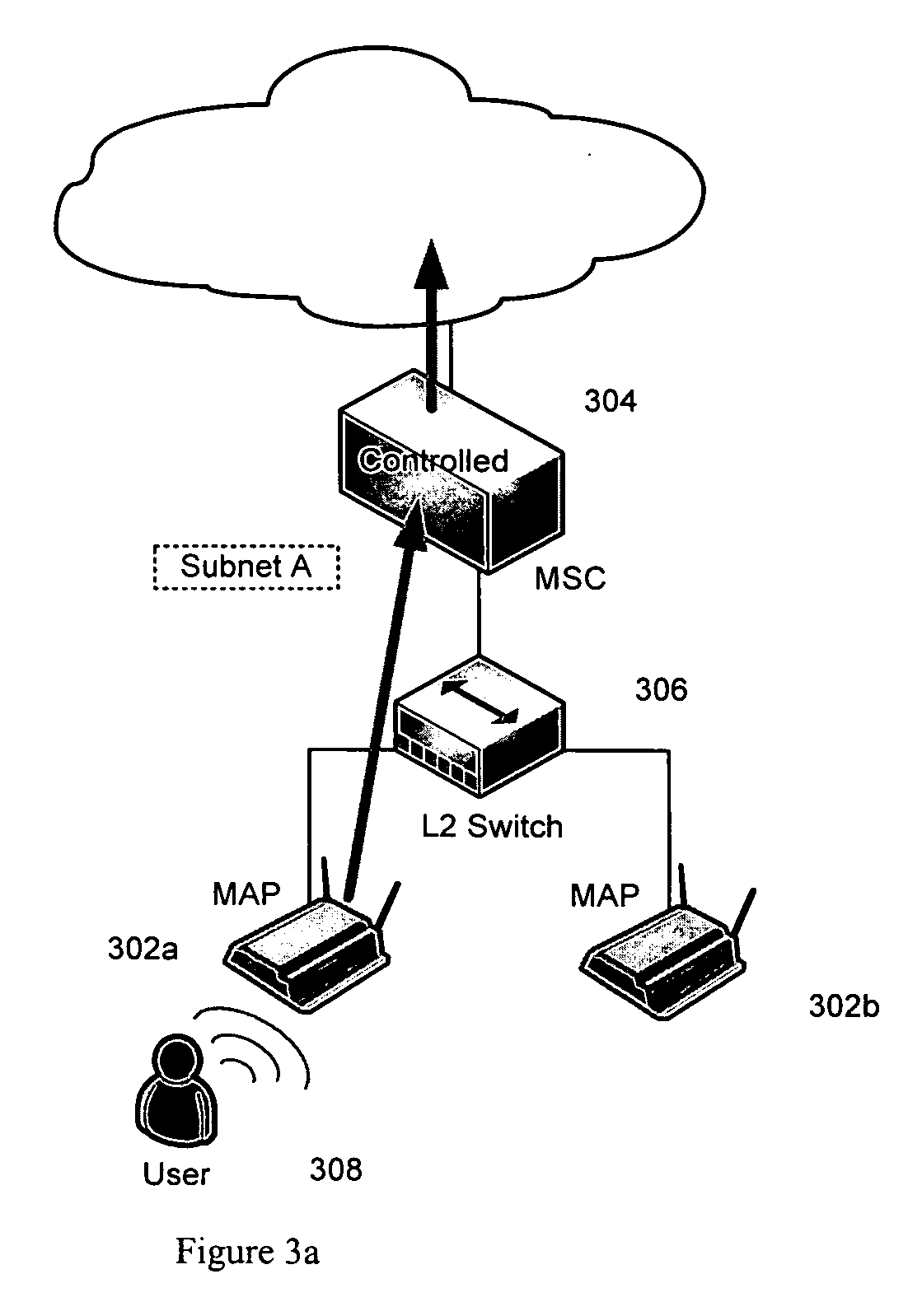Seamless roaming across wireless subnets using source address forwarding
a wireless subnet and source address forwarding technology, applied in the field of wireless device networking, can solve problems such as potential performance issues, bridges are sensitive to any packet, and it is not possible to provide seamless handover, so as to facilitate the support of large-scale topologies
- Summary
- Abstract
- Description
- Claims
- Application Information
AI Technical Summary
Benefits of technology
Problems solved by technology
Method used
Image
Examples
Embodiment Construction
[0033] In a representative embodiment, such as seen in FIG. 4, wireless infrastructure topology comprises a set of access points that are managed by at least first and second service controllers. A representative service controller is a MultiService Controller (MSC) available from Colubris Networks, Inc. of Waltham, Mass., although this is not a limitation of the invention. Any WLAN service controller or equivalent device may be used. A given service controller manages a large number of (e.g., up to 1000) access points, and the services controllers can be connected to one another through routers and switches to form a large topology. Of course, the number of access points and controllers will depend on the physical constraints of the facilities in which the infrastructure is implemented. The Wi-Fi infrastructure may include or have associated therewith a server that performs RADIUS-compliant AAA services. The service controller may be implemented in any convenient manner, such as a ...
PUM
 Login to View More
Login to View More Abstract
Description
Claims
Application Information
 Login to View More
Login to View More - R&D
- Intellectual Property
- Life Sciences
- Materials
- Tech Scout
- Unparalleled Data Quality
- Higher Quality Content
- 60% Fewer Hallucinations
Browse by: Latest US Patents, China's latest patents, Technical Efficacy Thesaurus, Application Domain, Technology Topic, Popular Technical Reports.
© 2025 PatSnap. All rights reserved.Legal|Privacy policy|Modern Slavery Act Transparency Statement|Sitemap|About US| Contact US: help@patsnap.com



